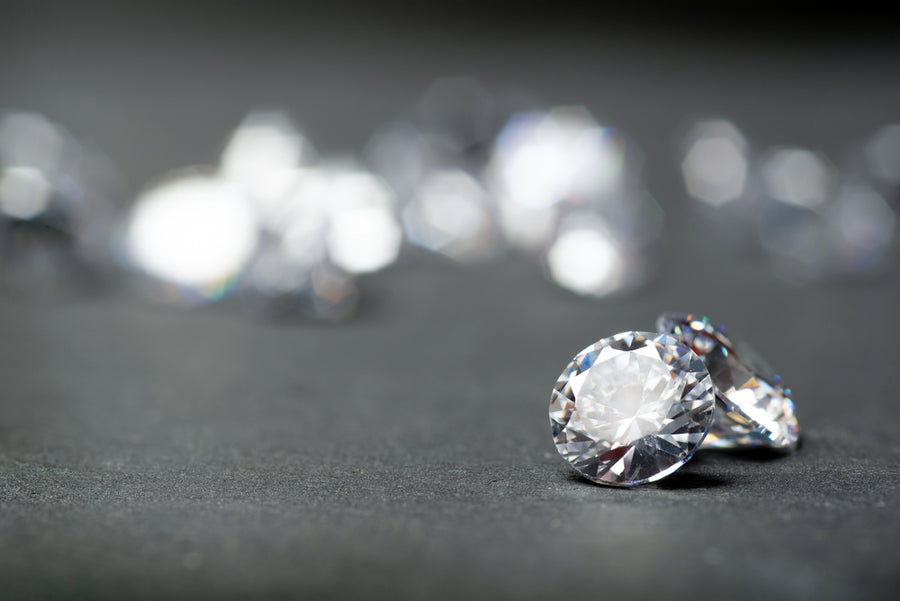
How Can You Tell If A Lab-Grown Diamond Is Good?
Lab-grown diamonds are popular additions to many jewelry pieces you find in stores. Designers set them into bracelets, necklaces, earrings, engagement rings, and more.
Lab-grown diamonds have different qualities based on clarity, carat weight, color, and cut (cut performance and cut shape). As a lab diamond buyer, it’s important to know whether you're choosing the right stone.
Read our guide about lab diamonds so you can determine the quality and authenticity of your stone.
How Do You Tell The Quality of a Lab Diamond?
Lab diamonds are graded on several factors that measure the quality of each diamond based on specific criteria known in the diamond industry.
Study the 4 Cs of Diamonds
The four Cs of diamonds are a universal grading scale for natural and lab diamonds created by the Gemological Institute of America (GIA).
These criteria measure the quality and performance of a diamond based on their individual scoring scales. The four Cs of diamonds are cut, clarity, carat weight, and color. GIA created these criteria to communicate the quality of diamonds and to give consumers a way to know precisely what they are about to purchase.
Diamond Cut
Rather than referring to its shape, a diamond’s cut (as per the GIA) refers to its symmetry, proportions, and polish. However, we at Brian Gavin Diamonds expand on this by incorporating the cut’s performance in our four “Cs plus one” grading scale.
That’s because the proper cutting of a diamond leads to maximum light performance—which includes brightness, sparkle, and scintillation. This extra C, which we discuss in detail at the end of this article, sets us apart. It helps our valued clients know they are shopping for the best-quality lab diamonds that have been meticulously designed as per the highest standards available.
Diamond Clarity
Diamond clarity refers to the inclusions and blemishes in the diamond.
Inclusions are imperfections that occur within the diamond, and blemishes are imperfections on the surface of the diamond. Diamonds with fewer imperfections have a higher grade on the clarity scale. The highest score on the scale is flawless or internally flawless, and the lowest score is I1, I2, and I3.
Even though a diamond can have a lower grade on the clarity scale, we typically can’t see many inclusions and blemishes with our naked eyes. Experts use 10x magnification to determine these imperfections’ number, location, size, and nature.
Diamond Color
Diamond color is given a letter from D to Z to represent colorless, near-colorless, faint, very light, and light. A diamond with a D rating is colorless, while a diamond rated Z is light.
Most diamonds in jewelry stores are colorless to near-colorless, with hints of yellow or brown.
You can also have fancy colors that receive a rating of:
- Faint
- Very light
- Light
- Fancy light
- DiamondFancy
- Fancy intense
Diamond Carat Weight
Diamond carat weight refers to how much a diamond weighs and usually refers to the total weight of the diamond. Larger diamonds will have a higher carat weight, while smaller diamonds have a lower carat weight. The smallest cut diamonds have a 0.50-carat weight, and the largest is a 5.00-carat weight on the GIA scale.
The “Plus 1” of Brian Gavin Diamonds
Now, back to our expanded grading scale that ensures every lab diamond we sell provides you with the quality you deserve. As you know, we like to grade diamonds based on the four Cs + one. The extra “one” is our differentiator and what makes our lab diamonds high quality and brilliant.
Brian Gavin Diamonds inspects how well each lab diamond interacts with light. Lab diamonds that are well cut have a desirable effect that emits white or gray reflections under different lighting. This is where cut/performance comes in.
We carefully inspect the polish, symmetry, and proportions of each diamond to ensure they have maximum light performance. Our high standards ensure each diamond set into your jewelry meets our expectations for sparkle factor and performance.
Lab-Grown Diamond Report
Diamonds have a grading report that includes the information mentioned above. The report attests to the quality of the diamond and ensures consumers know exactly what they’re buying. Authentic lab diamonds should have a lab-grown diamond report or certificate with information about the four Cs.
Buying from Brian Gavin Diamonds
Not only do we offer quality diamonds carefully cut and polished to our high standards, but we also do business responsibly.
Shop for a lab diamond that meets your specific criteria, filtering from color, clarity, carat weight, lab cut grade, and price from Brian Gavin’s Premium or Deluxe Lab Collections. You can also filter the grading lab, symmetry, fluorescence, and depth percentage.
Our Premium Lab diamonds are cut to Brian's exacting standards and patented process for light performance, these are all graded by the GIA and come with the additional AGS Ideal Report for light performance.
Whether you want a diamond set into pre-made or custom-made diamond jewelry, you will find it at Brian Gavin Diamonds. Our years of experience and attention to detail guarantee a diamond that sparkles brightly and beautifully.



















